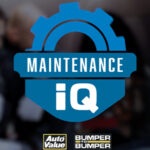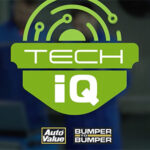The electric power steering system is typically part of the Hi-Speed CAN bus on the vehicle. On this network is the ECM for the engine and ABS/stability control system. These modules share information for vehicle speed, steering angle and engine operation. Other information like ambient temperature is shared through gateway modules like the instrument cluster.
The shared information can be used to solve mechanical problems like torque steer experienced by front-wheel-drive vehicles. The ECM might receive the input from the throttle pedal, indicating the driver wants wide-open throttle while the vehicle is at a low speed. The information could be used by the power steering module to add specific levels of torque to counteract torque steer. The ABS module can also apply the brakes to steer the vehicle.
Vehicle “data bus” units helped to solve this dilemma by eliminating additional wiring and the need for multiple sensors. Modern vehicles typically have more than one serial data network and even more modules than before, which all must obey and conform to the topology the engineers have specified. And two-wire buses have a topology that dictates they are wired electrically in parallel.
.

